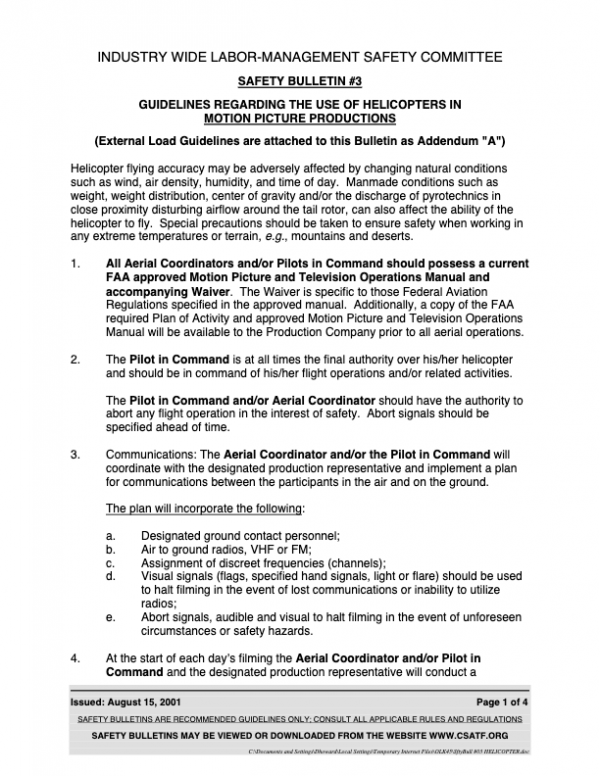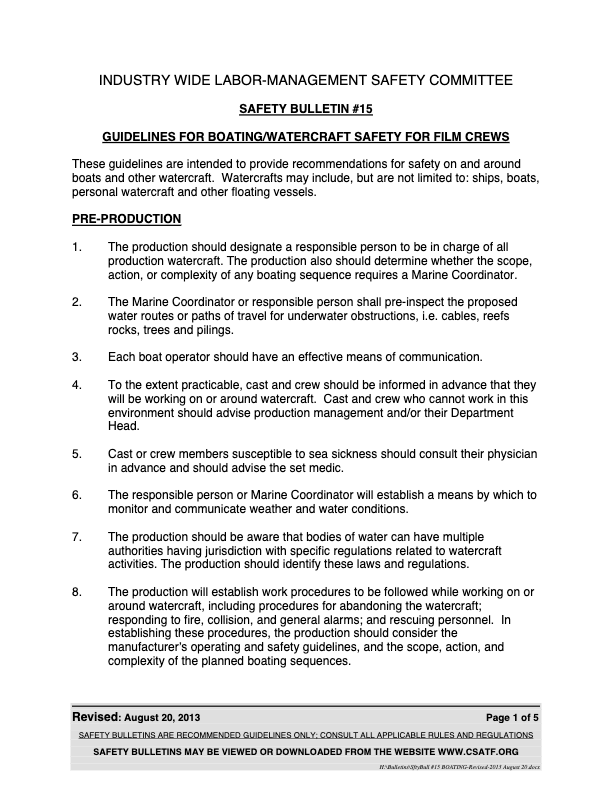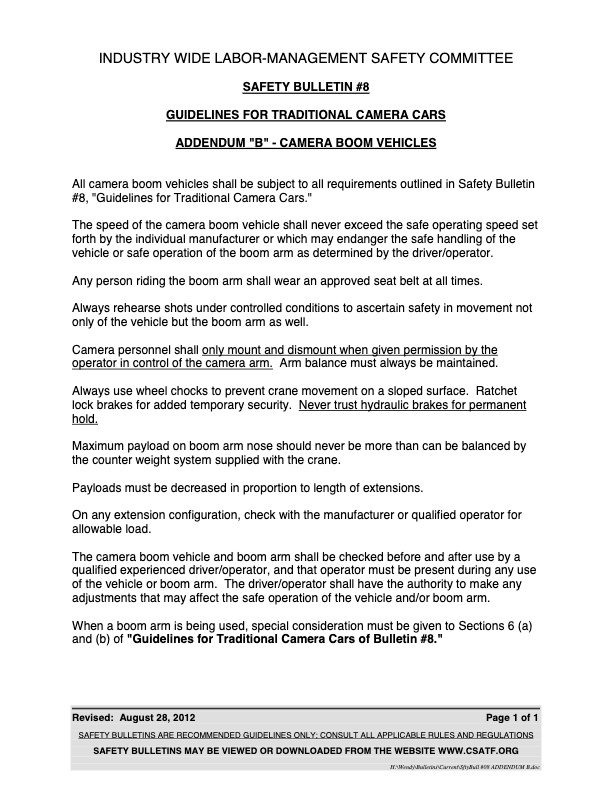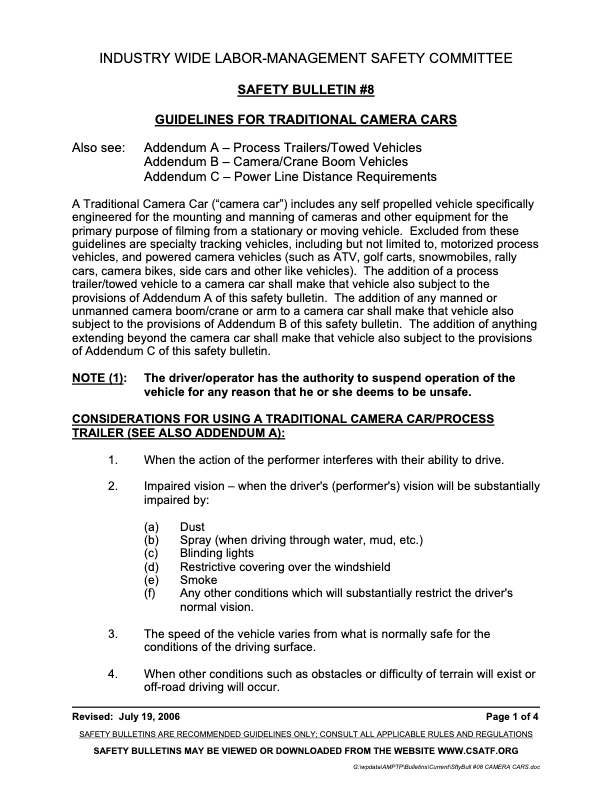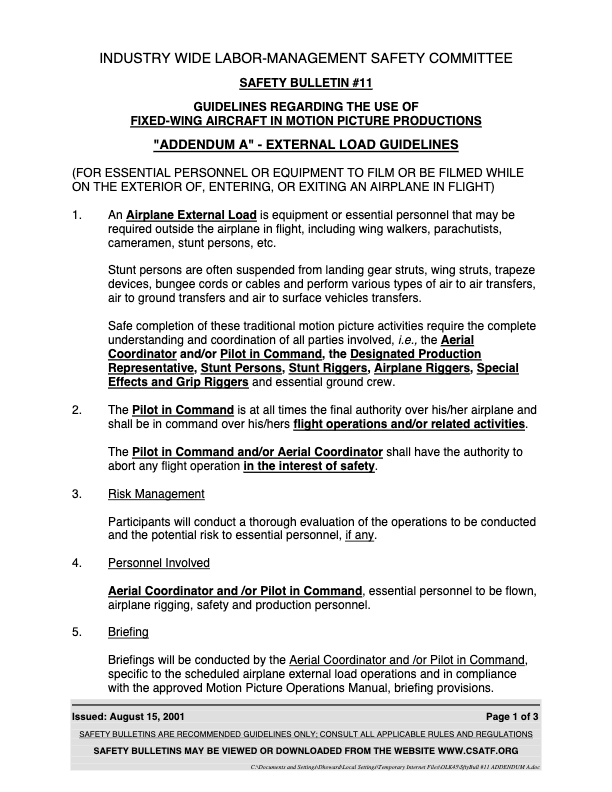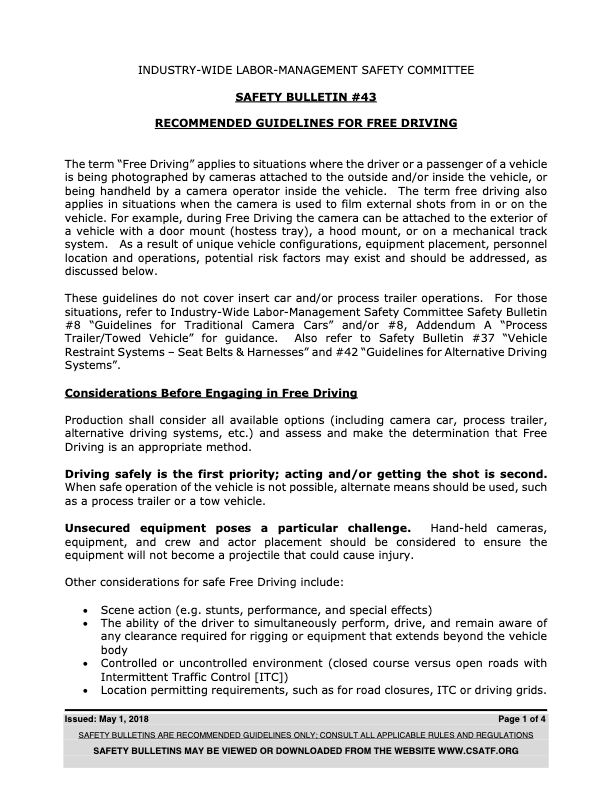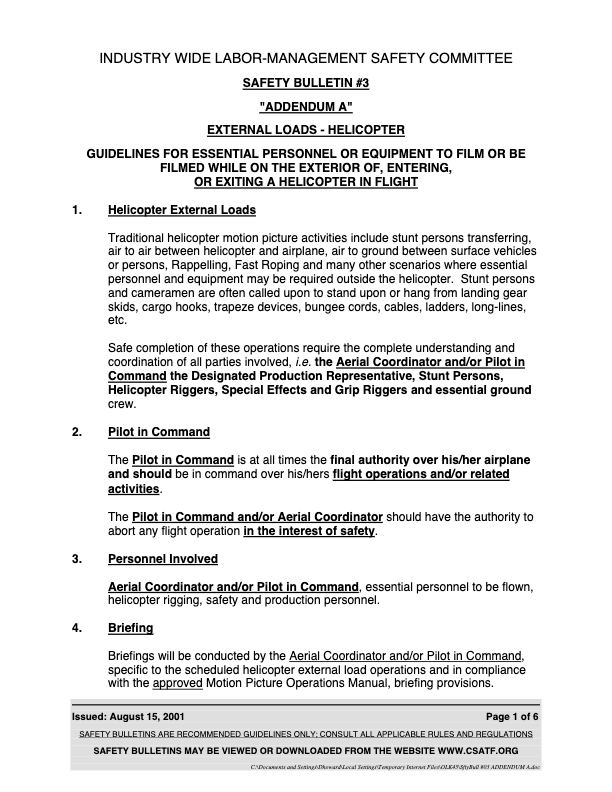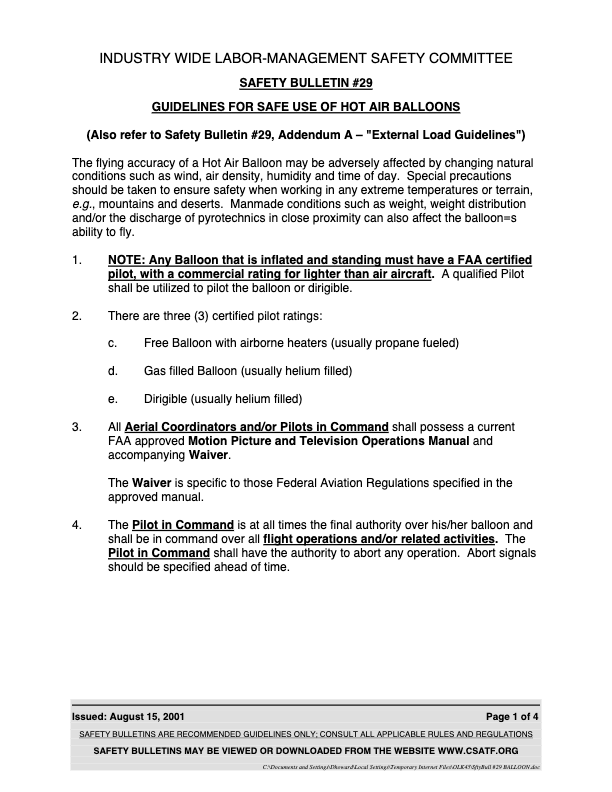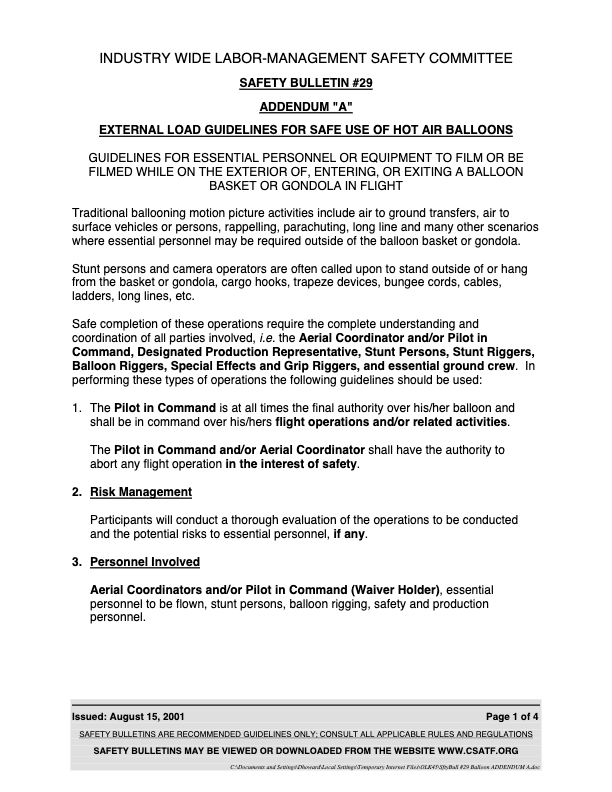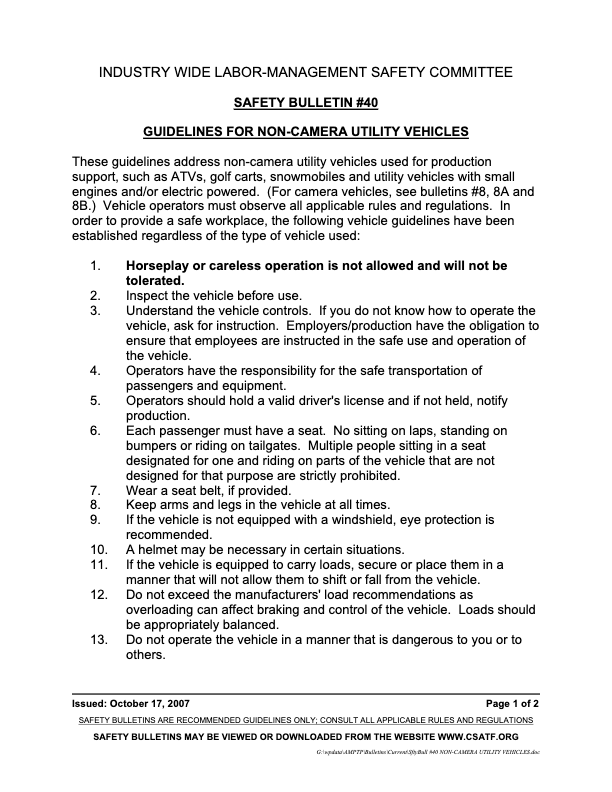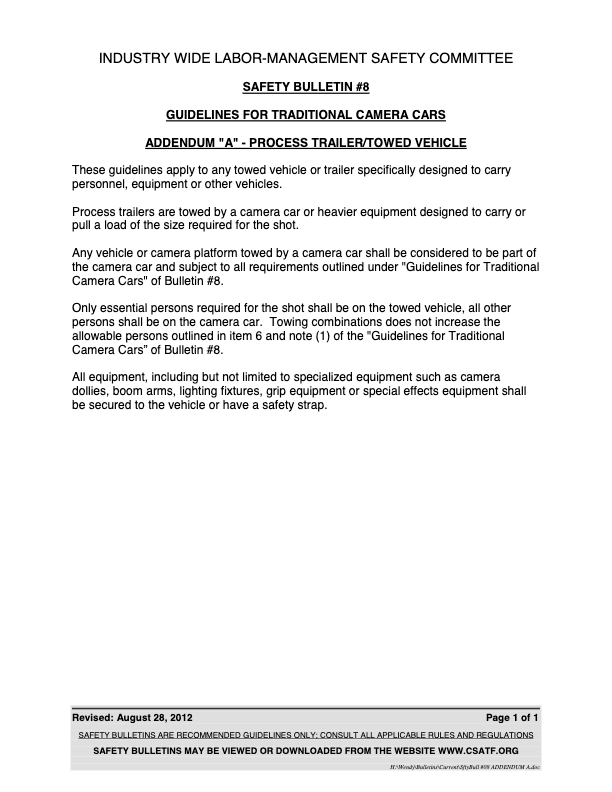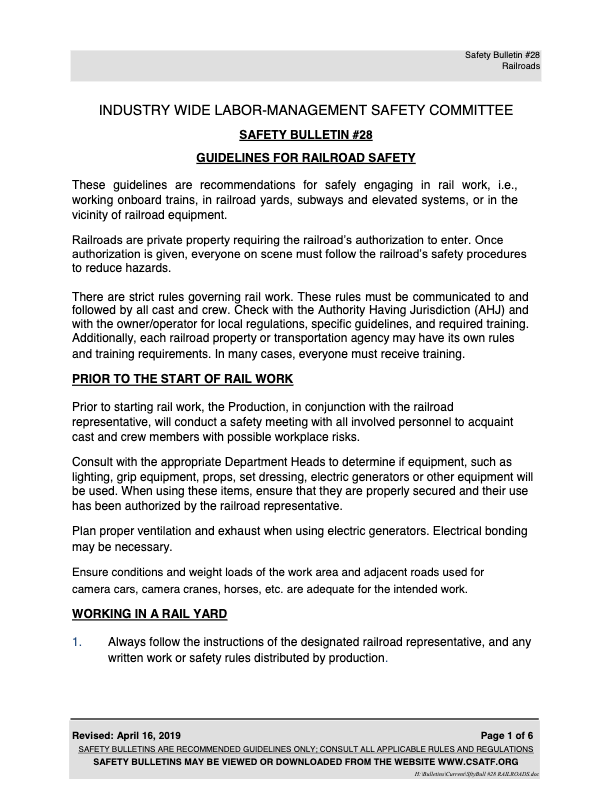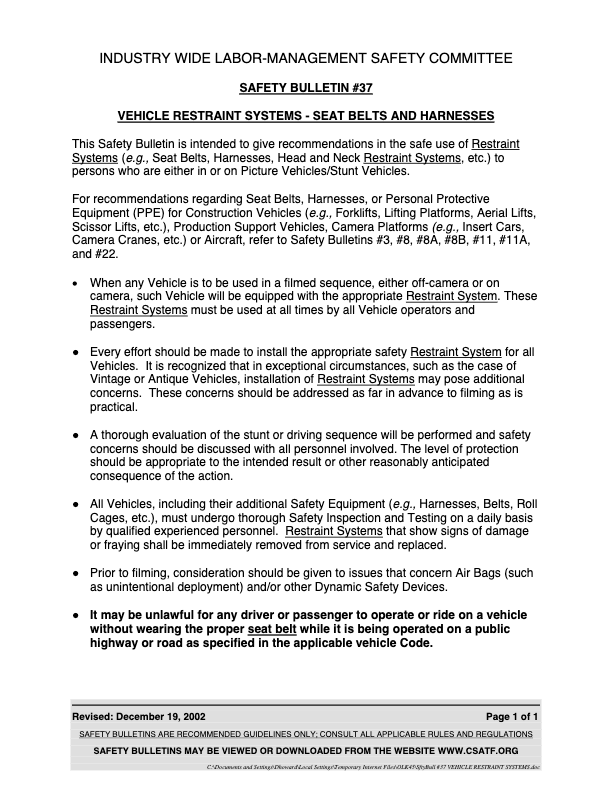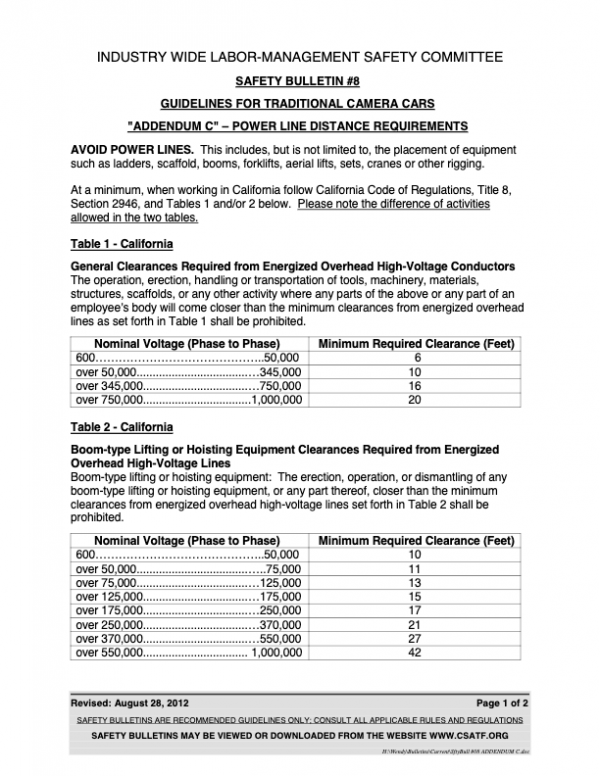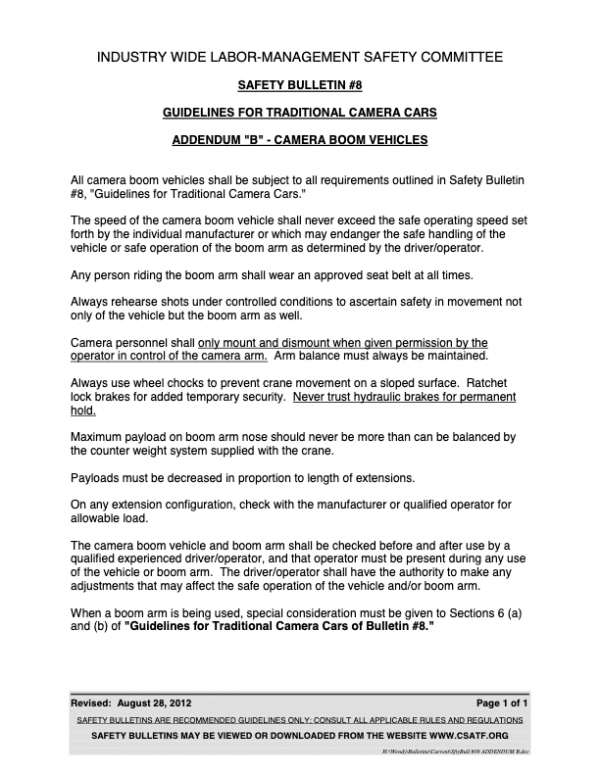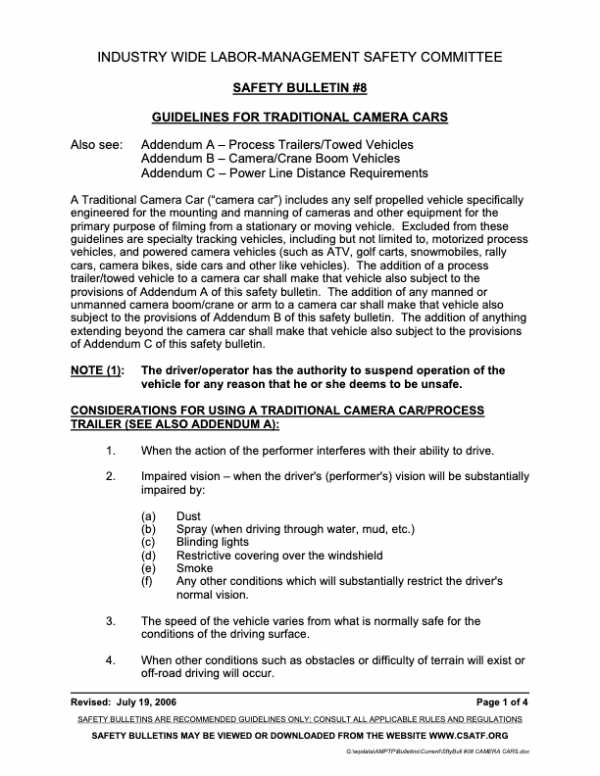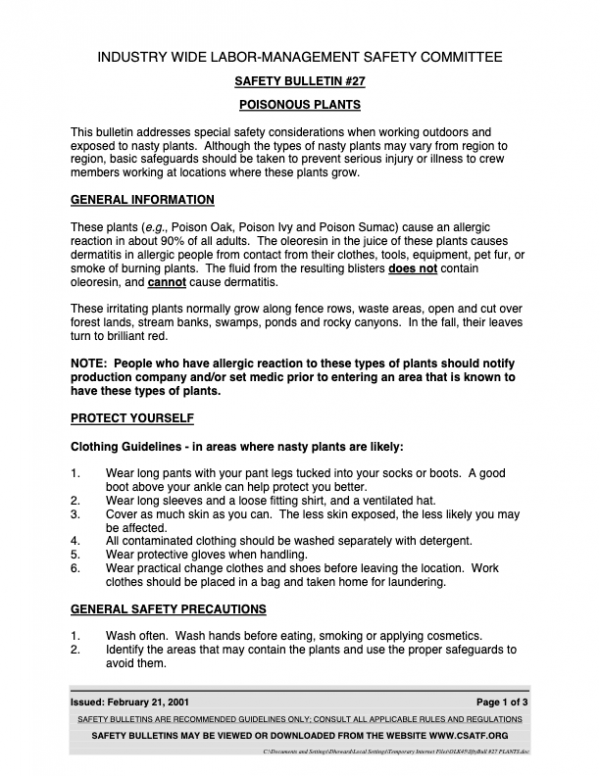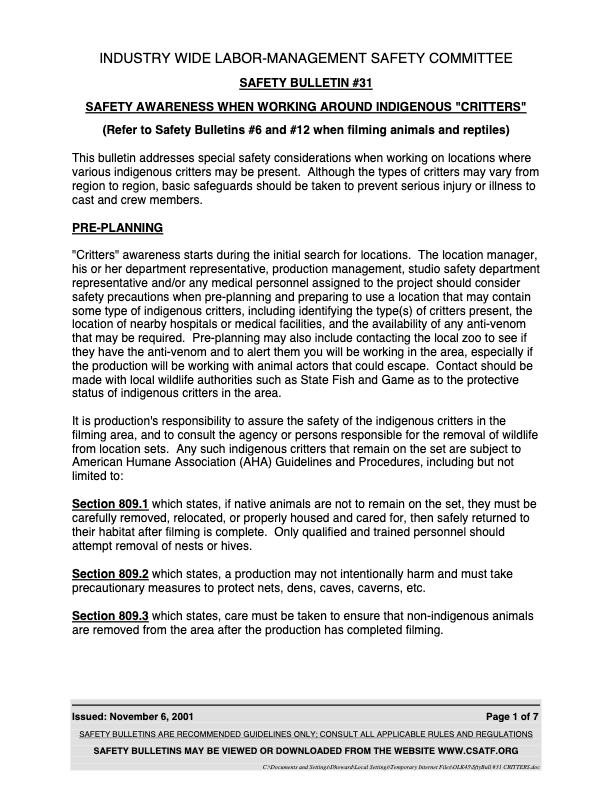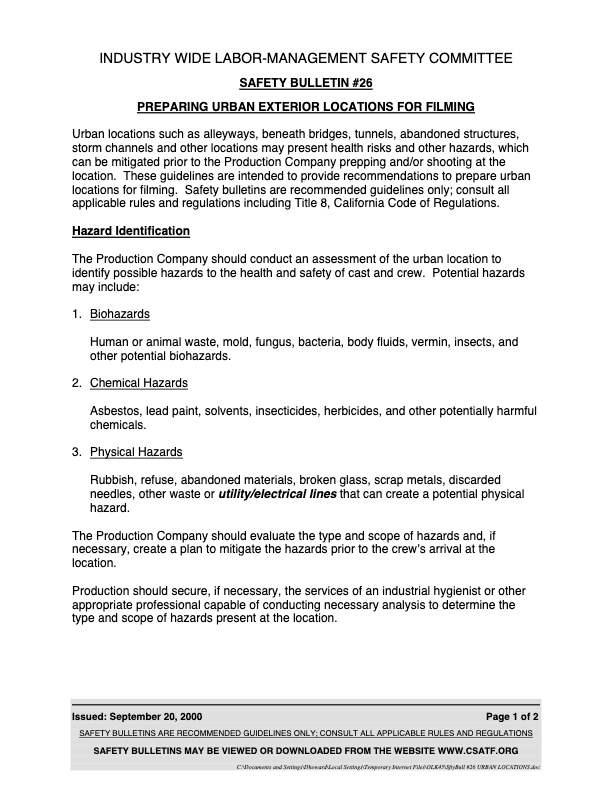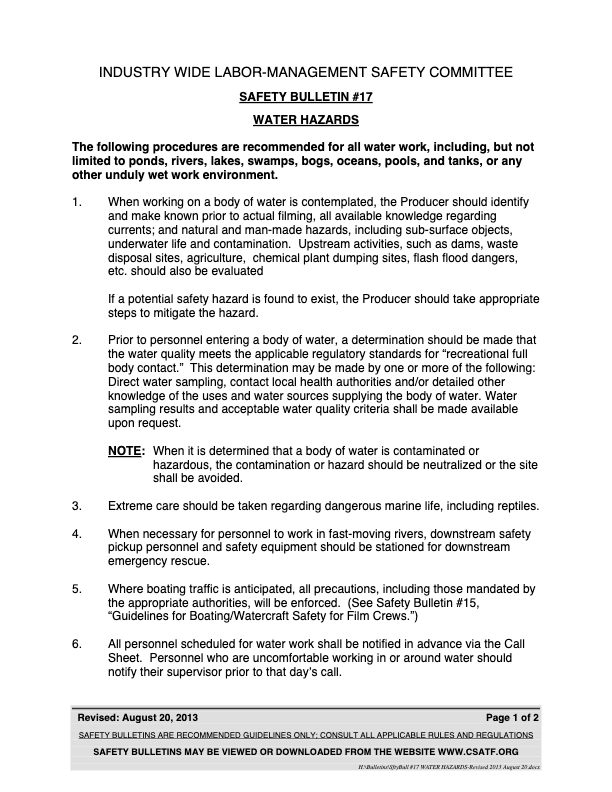Safety Bulletin
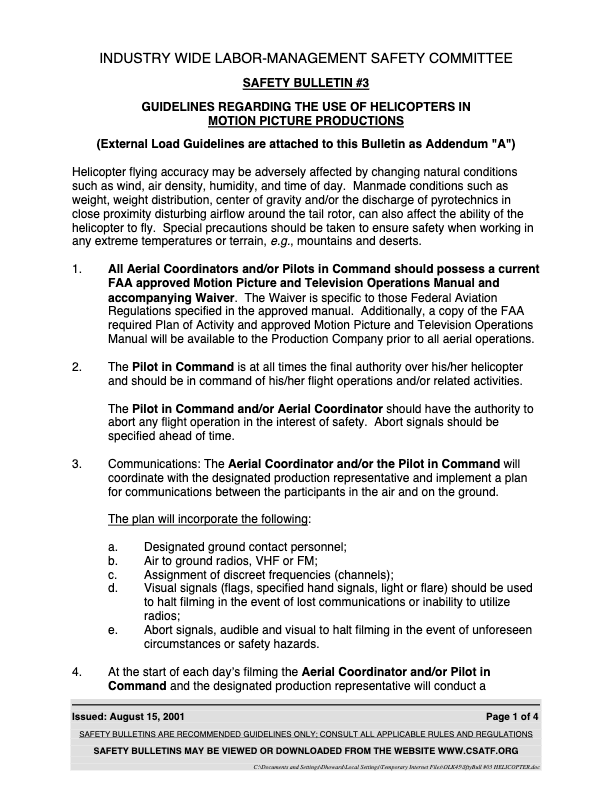
Guidelines
Helicopter flying accuracy may be adversely affected by changing natural conditions such as wind, air density, humidity, and time of day. Manmade conditions such as weight, weight distribution, center of gravity and/or the discharge of pyrotechnics in close proximity disturbing airflow around the tail rotor, can also affect the ability of the helicopter to fly. Special precautions should be taken to ensure safety when working in any extreme temperatures or terrain, e.g., mountains and deserts.
- All Aerial Coordinators and/or Pilots in Command should possess a current FAA approved Motion Picture and Television Operations Manual and accompanying Waiver. The Waiver is specific to those Federal Aviation Regulations specified in the approved manual. Additionally, a copy of the FAA required Plan of Activity and approved Motion Picture and Television Operations Manual will be available to the Production Company prior to all aerial operations.
- The Pilot in Command is at all times the final authority over his/her helicopter and should be in command of his/her flight operations and/or related activities. The Pilot in Command and/or Aerial Coordinator should have the authority to abort any flight operation in the interest of safety. Abort signals should be specified ahead of time.
- Communications: The Aerial Coordinator and/or the Pilot in Command will coordinate with the designated production representative and implement a plan for communications between the participants in the air and on the ground. The plan will incorporate the following:
- Designated ground contact personnel
- Air to ground radios, VHF or FM
- Assignment of discreet frequencies (channels)
- Visual signals (flags, specified hand signals, light or flare) should be used to halt filming in the event of lost communications or inability to utilize radios
- Abort signals, audible and visual to halt filming in the event of unforeseen circumstances or safety hazards
- At the start of each day’s filming the Aerial Coordinator and/or Pilot in Command and the designated production representative will conduct a briefing/safety meeting for the production staff and those persons necessary for filming, including emergency, safety and security personnel. A subsequent briefing/safety meeting should be required as necessary for intended action sequences and/or scenes. All safety meetings should include the following:
- Pertinent items and the special provisions of the Aerial Coordinator and/or Pilot(s) in Command, Motion Picture and Television Operations Manual and accompanying Waiver, along with any additional provisions issued by the local FAA Flight Standards District Office
- Possible risk to personnel who are involved
- Safeguards to personnel and equipment
- Communications
- Emergency procedures
- Location of boundaries
- Local governmental limitations or restrictions (if any)
- A preplanned stunt and/or special effect sequence will not be changed in any way without the authorization of the Aerial Coordinator and/or Pilot in Command. No changes should be made once the helicopter(s) is/are airborne.
- The Aerial Coordinator and/or Pilot in Command should designate one person as the Ground safety contact with no other responsibilities. The helicopter support truck Operator may be designated as the ground safety contact around the helicopter, if qualified.
- If there is a question as to safety of any aerial filming sequence involving low, over-the-camera shots, a briefing/safety meeting should be held between the Aerial Coordinator and/or Pilot in Command and concerned persons as to whether the use of a locked-off camera is necessary.
- No smoking within 100 feet of the helicopter or support fuel truck.
- Remain at least 50 feet away from the helicopter unless directed by the Aerial Coordinator and/or Pilot in Command or ground safety contact. Under no circumstances should you approach the helicopter without permission from the ground safety contact or the Pilot in Command.
- Whether the rotors are turning or not, always approach and leave the helicopter from the front. Prior to your approach of the helicopter you should:
- Make acknowledged eye contact with the pilot;
- Proceed to the helicopter only after the pilot has acknowledged your presence and waves you forward;
- Never run;
- Walk, looking forward at all times;
- Never walk downhill towards a helicopter;
- Never walk uphill away from a helicopter.
- Never walk near or around the rear and tail sections of the helicopter, whether it is running or not.
- Never walk under the tail section of the helicopter, whether it is running or not.
- Carry all equipment parallel to the ground when within 50 feet of a helicopter. Do not vertically extend any equipment, (i.e., cameras, lights, or sound boom) into rotor blades, whether it is running or not.
- Necessary Crew and Persons Authorized: Flight operations closer than 500 feet of persons will include only those persons consenting to be in close proximity to the aircraft and who are directly involved and necessary for filming. The Aerial Coordinator and/or Pilot in Command and the designated production and security personnel will maintain an area perimeter to insure that no unauthorized persons are allowed within 500 feet of the flight operations.
- Personal Protective Equipment should be utilized as required.
- Never under any circumstance throw anything such as grip tape, clothing, paper, etc. around the helicopter, whether it is running or not.
- The landing area should be cleared of debris and, where necessary, wet down. Ensure all equipment is tied down or stored away from the area.
- Do not wear any loose clothing that may blow off, such as hats, when operating near a running helicopter. Protect your eyes, as well as your equipment, when helicopter is landing or taking off.
- Rotor blades and fuselage can be easily damaged while on the ground. Never push, handle, sit on or in, or lay any objects of any kind on an aircraft without the pilot’s permission.
- If a foreign object falls into or against an aircraft, report it immediately to the pilot or aerial coordinator.
- Never allow cast or crew to occupy an aircraft while engines are running or rotors are turning, unless authorized by the Pilot in Command.
- When working on location or when utilizing Department of Defense aircraft, local agencies, regional police, fire, park department regulations, or military guidelines may vary from this bulletin. The more stringent guidelines will always be in effect. Additional permits may be required for landing or refueling operations.
- The production company must notify all cast and crew members and the front of the studio call sheet should contain a statement to the effect that: ”An aircraft is being used and will be flown in close proximity to crew and equipment. Anyone objecting will notify the production manager or 1st AD prior to any filming.”

